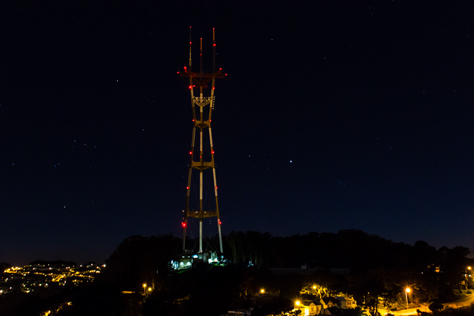
Sutro Tower (1972), Orion, Jupiter and the street lamps of Marview Way from Twin Peaks.
Christmas Tree Point Road, San Francisco, California: 31 January 2013
part of the Twin Peaks album

Sutro Tower (1972), Orion, Jupiter and the street lamps of Marview Way from Twin Peaks.
Christmas Tree Point Road, San Francisco, California: 31 January 2013
part of the Twin Peaks album

The Golden Gate Bridge and strait with San Francisco Bay, the city and Sutro Tower from near Hawk Hill in the Marin Headlands.
Conzelman Road, Golden Gate National Recreation Area, Sausalito, California: 29 January 2013
part of the Marin Headlands album
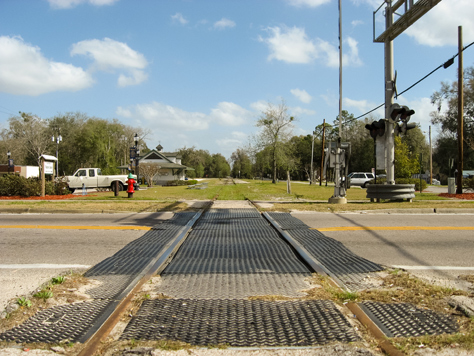
The old Savannah, Florida and Western Railroad tracks (1884) running southeast through High Springs at Main Street.
Near 10 North Main Street, High Springs, Florida: 19 February 2012
part of the O'Leno State Park 2012 album
Early last week I was saddened to learn that part of the historic railroad running through High Springs at Main Street (US 41) was being removed. Between 14 April and 18 April 2014, the Florida Department of Transportation uninstalled the tracks and signal posts, repaved Main Street and repaired the sidewalk.
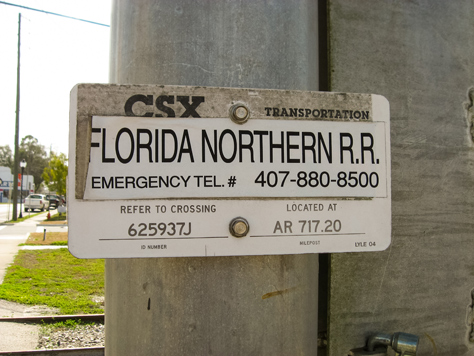
I have to admit that there is a logic to the removal of CSX intersection 625937J at railroad milepost AR 717.20 — train service along this line was discontinued three years ago and local police report citizen complaints about the roughness of the crossing. Regardless, I think it is still too bad considering the rich history of this particular railroad and its contribution to the founding of High Springs.
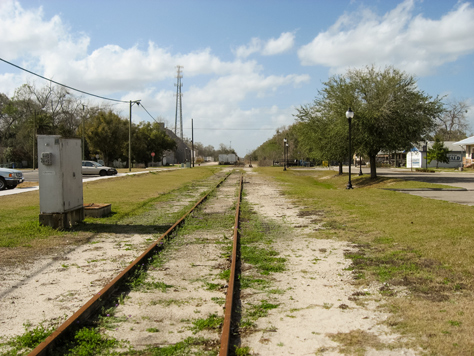
Expansion of the Plant System's original rail line — the Savannah, Florida and Western Railway — from Live Oak to Gainesville in 1884 brought the train through the center of the then unnamed town. When the new train station and post office opened in November 1884, they were both called Santaffey.
The name's spelling was corrected to Santa Fe in March 1885 but then changed to Fairmont later that year. The penultimate renaming to Orion occurred in 1886, lasting until 24 May 1888 when the name High Springs was selected. The city was later incorporated as High Springs in 1892.
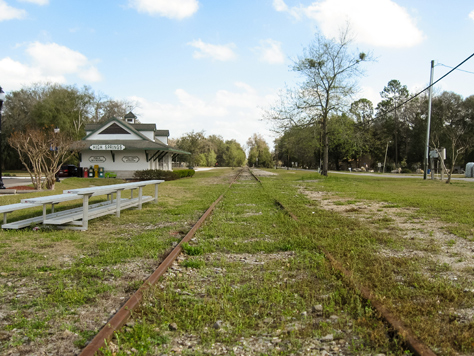
Several other lines soon converged with the Savannah, Florida and Western Railroad in High Springs and in 1889, phosphate deposits were discovered nearby. With the necessary transportation already in place, a significant phosphate mining industry soon developed. From 1889 to 1898, nearly fifty mines were established in Alachua County with the bulk in High Springs and Newberry. Meanwhile, a pine and cypress timber industry also grew.
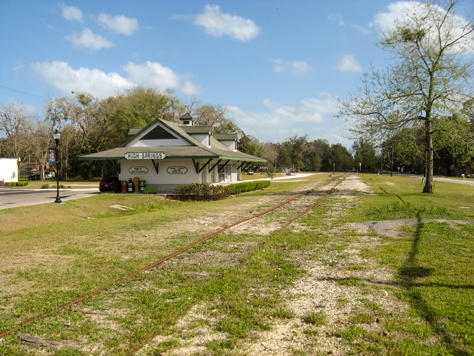
As well as turning into an important junction for the Plant System, High Springs also became their division headquarters in 1895. The following year, construction began on railroad service shops, roundhouses, offices and a two-story frame medical center described at the time as "large and commodious and … fitted up with all the equipment of modern hospitals."
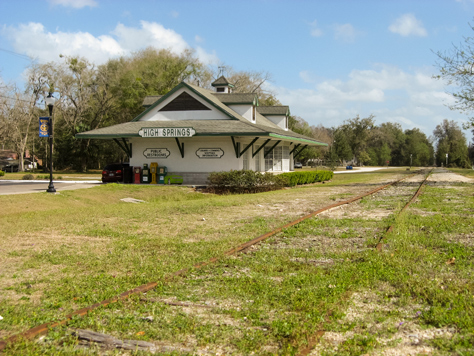
Adjusted for inflation, the Plant System spent around $4.4 million dollars building out their High Springs operation. With facilities for cleaning, inspecting, repairing and overhauling railcars and steam engines befitting a leading railroad service center, additional tracks were laid to lines in South Florida and additional workers moved into town. As the population rose to 2,000 by 1898, High Springs became the second largest city — following Gainesville — in Alachua County.
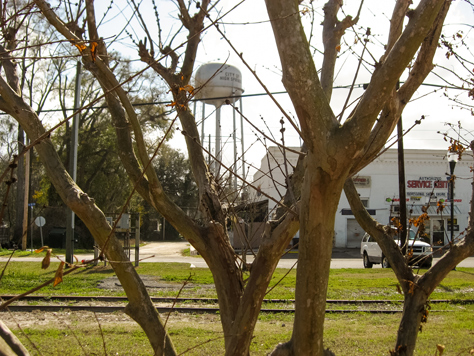
Despite a tornado and several fires ravaging the city during the 1890s, the flourishing railroad, phosphate, lumber and cotton industries ensured that the community quickly rebuilt itself. Thanks to the Plant System, High Springs was additionally afforded many luxuries normally reserved for large cities such as good schools and churches, the hospital and an opera house.
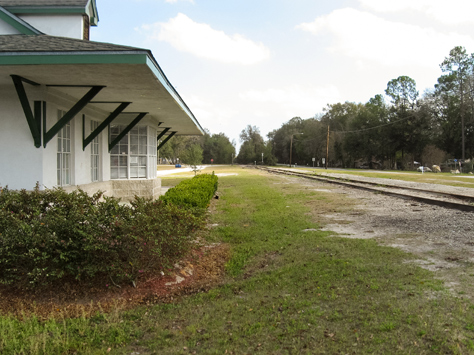
Even as other local industries waned, the railroad maintained its importance and provided a steady source of employment into the 1930s. That started to change, however, as the Great Depression and a transition from steam to diesel engines lessened the need for the facilities.
The yards and shops were gradually closed and many of the buildings torn down in the years following 1945. Luckily at least 250 commercial and residential structures built during the railroad era between 1895 and 1940 are estimated to remain intact and mostly unchanged (as of 1990).
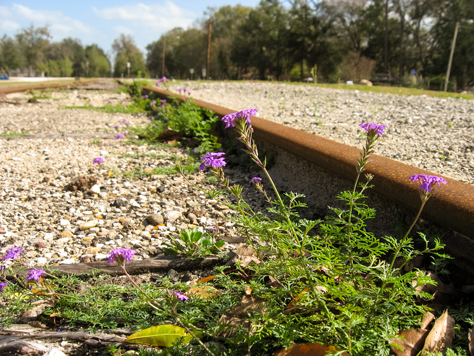
The Plant System was acquired by two-year-old Atlantic Coast Line in 1902. That railroad operated until 1967 when it merged with rival Seaboard Air Line Railroad to form the Seaboard Coast Line Railroad, much of which later became owned by CSX Transportation in 1986. Rail service in one form or another continued until recently, finally ending altogether in 2011.
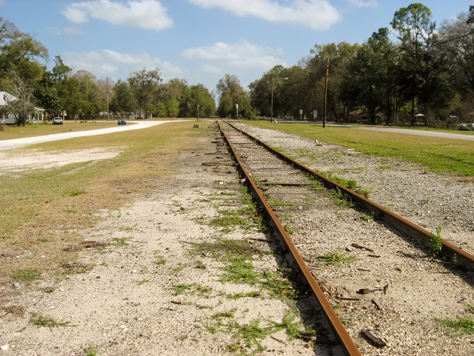
I honestly do not know how much of the off-intersection track was removed, but I am pleased that I happened to visit and photograph the area before last week's dismantling. Fortunately, the High Springs Historical Society also recognizes the railroad's historical importance and obtained permission to take some of the removed railroad hardware for future display in their museum.
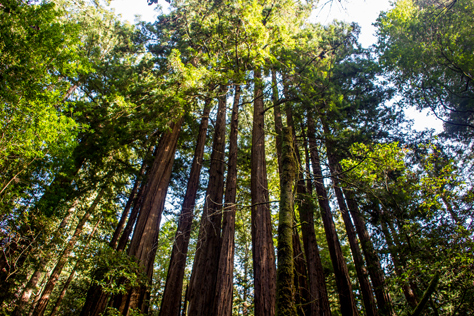
Looking up at the giant redwood (Sequoia sempervirens) forest on the Main Trail near the border of Mount Tamalpais State Park at Muir Woods National Monument.
Near 1 Muir Woods Road, Marin County, California: 29 January 2013
part of the Muir Woods album
The first stop on my 2013 birthday of nature, trails and photography was the one and only Muir Woods National Monument in Marin County. It was the natural place to begin, considering its proximity to the other destinations scheduled.
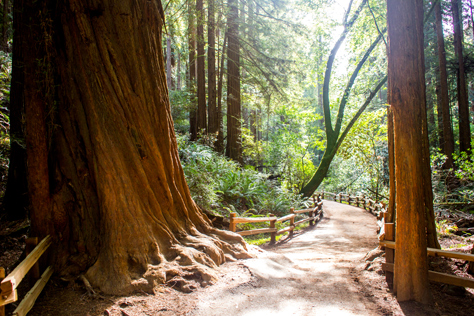
At times like my last visit in the mid-1990s, Muir Woods can be too popular a place to fully enjoy and immerse yourself in its wonderful, peaceful surroundings. Only twenty minutes north of San Francisco, it is a popular tourist destination especially for those who have never seen a great redwood tree. On 29 January 2013 though, Marc and I had the place basically to ourselves.
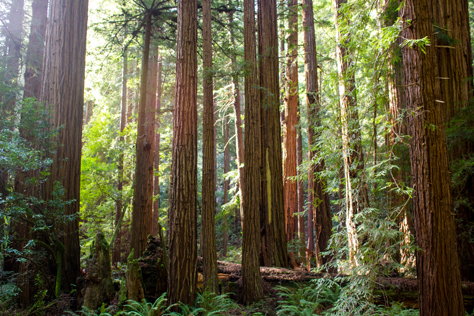
Over the course of three hours, we meandered down the Main Trail all the way to the signed border of Mount Tamalpais State Park and then back, taking a slightly different route where available. Crisp, cool and especially fresh oxygenated air flowed through the dimly lit forest. Tranquil and pure, chirping songbirds were the only soundtrack heard.
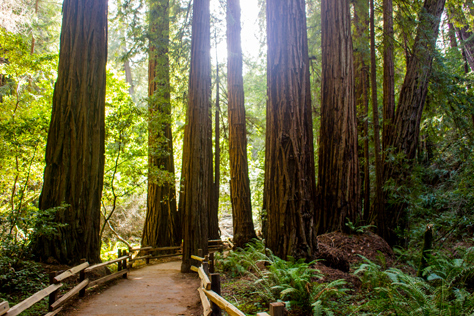
Muir Woods is a beautiful place and we were lucky to be there on a quiet, seemingly tourist-free day. However pleased I may be with some of my photographs from this visit, there is an ineffable quality to a place like this impossible to capture truly.
And just as I experienced six days earlier at Henry Cowell Redwoods State Park, it is an interesting juxtaposition being secluded in a wonderful natural place like Muir Woods yet so close to over seven million people.

Great Egret (Ardea alba) and California sea lion (Zalophus californianus) vying for fish at the outdoor "Pacific Point Preserve" exhibit at SeaWorld Orlando.
7007 Sea World Drive, Orlando, Florida: 28 December 2013
part of the SeaWorld Orlando album